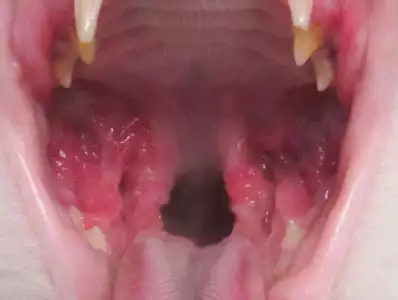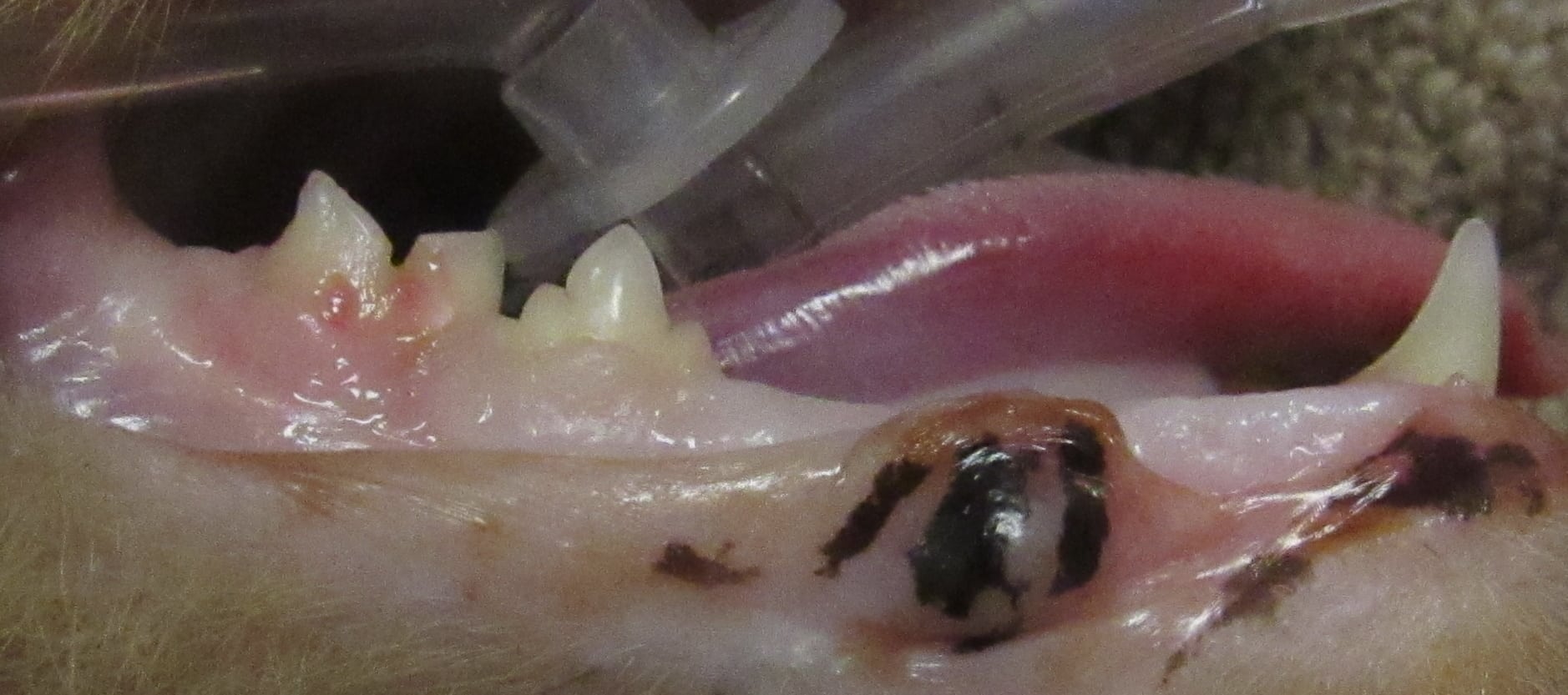Common Dog and Cat Oral Diseases in Boxborough
Here at Veterinary Dental Services, we have extensive experience treating numerous diseases in dogs and cats using state-of-the-art tools and techniques. The following is a list of some of the most common diseases we treat:
- Gingivitis/periodontal disease: This pervasive disease occurs when the body’s immune system reacts to bacteria and toxins that accumulate on teeth in the form of plaque. Periodontal disease is progressive and results in tooth loss, oral pain, infection, bad breath, and potentially systemic complications.
- Fractured teeth: The most common causes of fractured teeth that we see are: cow hooves, antlers, hard nylon toys, ice cubes, rocks, and marrow bones. A fractured tooth with pulp exposure allows bacteria to enter the tooth. We always recommend treating this type of fractured tooth with root canal therapy or extraction. Sometimes we’ll recommend placing a crown as well.
- Discolored teeth: A discolored tooth can occur when a pet chews on hard objects or from blunt trauma to the mouth. The pulp of the tooth bleeds and initially stains the dentin pink. Eventually the tooth will become purple or grey. Dr. Feigin and Dr. Shope are currently investigating discolored teeth histologically, to learn more about the health of these teeth and how to treat them. Currently we recommend that discolored teeth (even partially discolored) are either extracted or treated with root canal therapy.
- Persistent primary teeth: Sometimes, a pet’s adult tooth will erupt before the baby tooth has fallen out. This can prevent the adult tooth from erupting in its appropriate place. Persistent primary teeth can also cause crowding between teeth and contribute to plaque accumulation and subsequent gum disease. We recommend extracting any persistent primary teeth as soon as possible to help prevent a malocclusion, or a misaligned bite.
Stomatitis

- Stomatitis: Stomatitis is a severe inflammation of the oral cavity in cats caused by an exaggerated inflammatory response to the plaque bacteria. The inflammation causes the gum tissue and oral cavity to become swollen, red, and very painful. The exact cause of stomatitis is unknown, but we have successfully treated hundreds of cats with this disease.
Tooth Resorption

- Feline tooth resorption: This condition results in loss of tooth structure, and is painful. Previously known as neck lesions, cervical line lesions, or feline odontoclastic resorptive lesions, tooth resorption affects 28-67% of cats based on various studies. It is the most common reason that cats lose teeth, and often times multiple teeth are affected. The exact cause of tooth resorption is unknown. Once a tooth with resorption has been identified in a cat’s mouth, it’s very common for additional lesions to occur. Dental radiographs are imperative to diagnose and treat tooth resorption.
- Carious lesions (cavities): These typically are seen on the flat occlusal surface of the molar teeth in dogs and have a brown or black coloration. If a cavity has not progressed too far, it can be treated with a filling. If the cavity has affected the pulp canal, then either root canal therapy or extraction is recommended.
- Oral masses: These masses can be benign or malignant. Early detection is important so that treatment can be started. We biopsy any suspicious growths in the mouth and send them to a pathologist for review. Some of the more common malignant masses we see are squamous cell carcinoma, melanoma, and fibrosarcoma.
- Canine tooth resorption: These lesions can be internal, external, or both, and can affect the crown or the root of teeth. Dental radiographs are imperative in the diagnosis and treatment of canine tooth resorption. Often, they are not detected until the oral cavity is examined carefully under general anesthesia. The classic destruction of the tooth root may be visible as an irregular root, or one that appears on X-ray as being replaced by bone. Some but not all forms of tooth resorption in the dog can be painful, and these are treated with tooth extraction.
- Jaw fractures: Fractures of the jaw can be caused by trauma or can be secondary to extensive bone loss from periodontal disease. Our CT scan and dental radiographs are ideal for evaluating trauma and planning repair. We offer several repair techniques, while maintaining alignment of the teeth, to get your pet back to normal function right away.
- Malocclusion (abnormal bite): Many malocclusions are genetic, although some are caused by trauma. Some are considered normal for the breed. Treatment options may include moving teeth with orthodontics, extracting teeth, or crown shortening with vital pulp therapy. Our goal is to provide a comfortable and functional bite for our patients with malocclusions.
